The best weightlifting belts in 2022
The best weightlifting belts in 2022
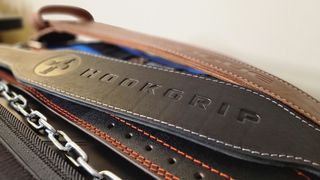
If squats, clean-and-jerks, and other powerlifting moves are part of your regular workout routine, you'll need 1 of the all-time weightlifting belts in your corner for some actress back up. When it comes to such dynamic-even so-central exercises as these, proper form is paramount, and the heavier you get with those weight plates, the higher the risk for potential injury without the right tools in your tool…err, belt. That'southward where the best weightlifting belts come into play. Safe first, folks.
Weightlifting belts are basically built for the purpose of keeping your back stabilized every bit you perform deadlifts, overhead presses, and other advanced exercises that but aren't for the faint of core. In short, the all-time weightlifting belts are there when you need them, and so are nosotros. On the journey to condign a magnificent Mount of musculus, you lot'll have to start out equally a relative molehill outset.
- The best adjustable dumbbells for your home workouts
- We've got more of the all-time home gym equipment right here
What are the best weightlifting belts?
Later testing out v different weight belts of diverse sizes and styles, the all-time overall weightlifting belt is the Rogue Ohio Lifting Belt. This Editor'southward Choice-winning make is trusted by top-tier athletes around the country, and it's dead-uncomplicated to use.
The Hookgrip Russian Weightlifting Chugalug is some other top selection. Its unisex pattern is slap-up for virtually all body types, and you only tin can't argue with contoured comfort. Or the price.
The Night Iron Fitness Weightlifting Belt is next on the list, and fifty-fifty though information technology's super affordable, it doesn't experience cheap. This chugalug strikes a good residue between comfort, core back up, and durability amidst the myriad synthetic belts on the market today.
The best weightlifting belts to buy
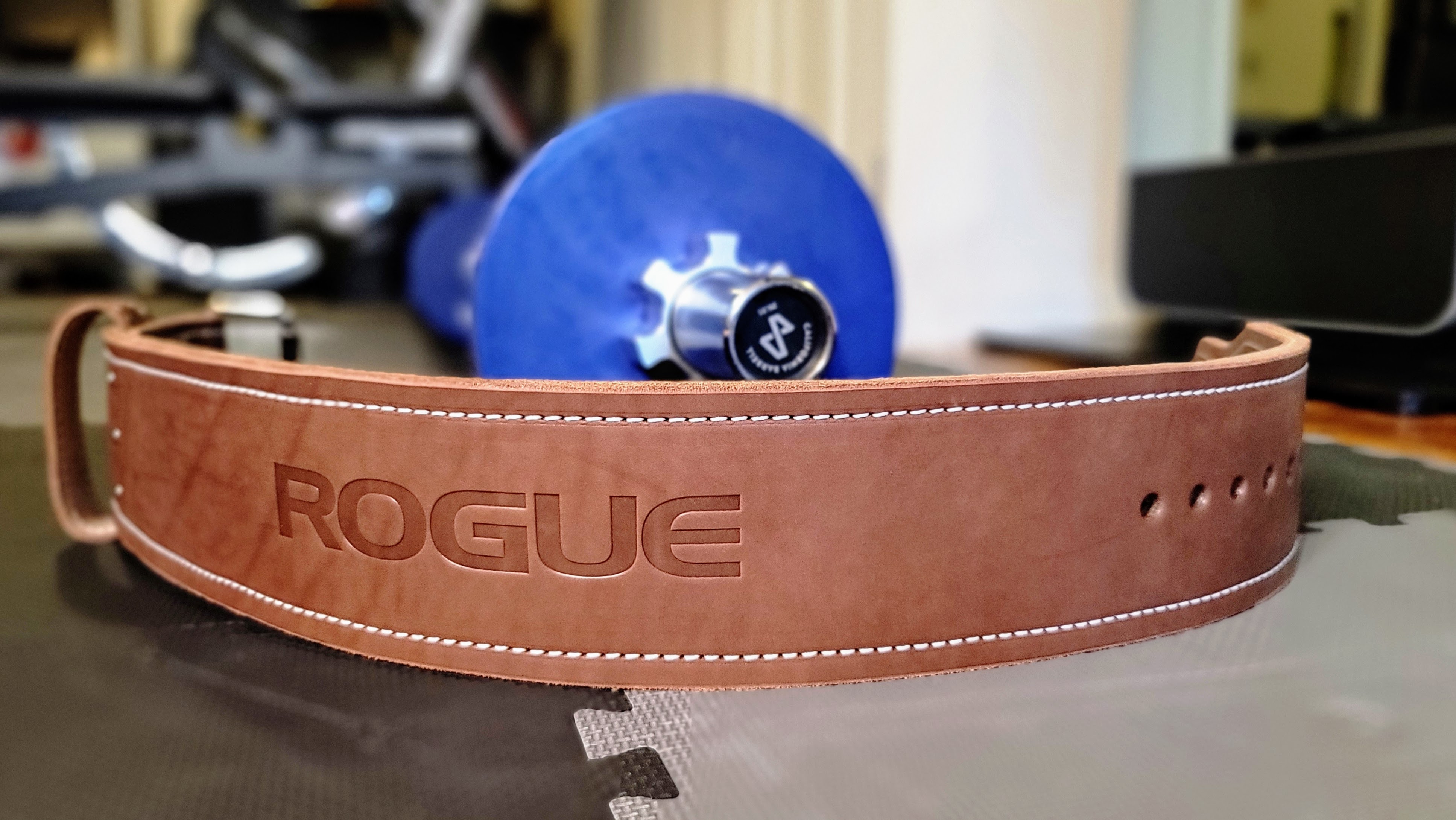
If y'all already know your way effectually the gym, you're probably familiar with this make; Rogue has long been a trusted name in the weightlifting community, and the company is renowned for its force and conditioning equipment — barbells, ability racks, sleds, yous proper name it. In fact, they're the official equipment supplier of the CrossFit Games, USA Weightlifting, the Arnold Strongman Classic, and the Earth's Strongest Human being competition.
Looking for a more traditional weightlifting belt that isn't pulling whatever punches? The Rogue Ohio Lifting Belt is a common pick for professional athletes across the board, and the Ohio looks like it ate your favorite tuxedo for breakfast. Available in five lengths and made from 10 millimeter-thick vegetable-tanned American leather, this iv-inch wide chugalug is meant to ease stress in your lower back while simultaneously reducing the potential for long-term injury in your spine. And it's popular for a reason.
In my testing, the Rogue Ohio felt squeamish and snug around my waist, though even after several uses the leather is stubbornly potent. (It comes with the territory.) That'due south just fine by me, since that initial stiffness just adds to the overall support, but until the leather wears in, this weightlifting chugalug may be a little catchy to unbuckle. Not a deal-breaker by any means.
The flawlessly reinforced stitching and single-prong buckle keeps everything in identify, allowing me to eke out that terminal ounce of energy as I transitioned from shrugs to squats to overhead press. My core felt secure with each and every rep. The entire belt feels similar office of a equus caballus saddle — which is a good thing. (Horse saddles can handle a lot more stress than anything my monkey-human muscles tin muster, after all.)
If powerlifting is in your hereafter, y'all can't practise much better than the Rogue Ohio Lifting Belt.
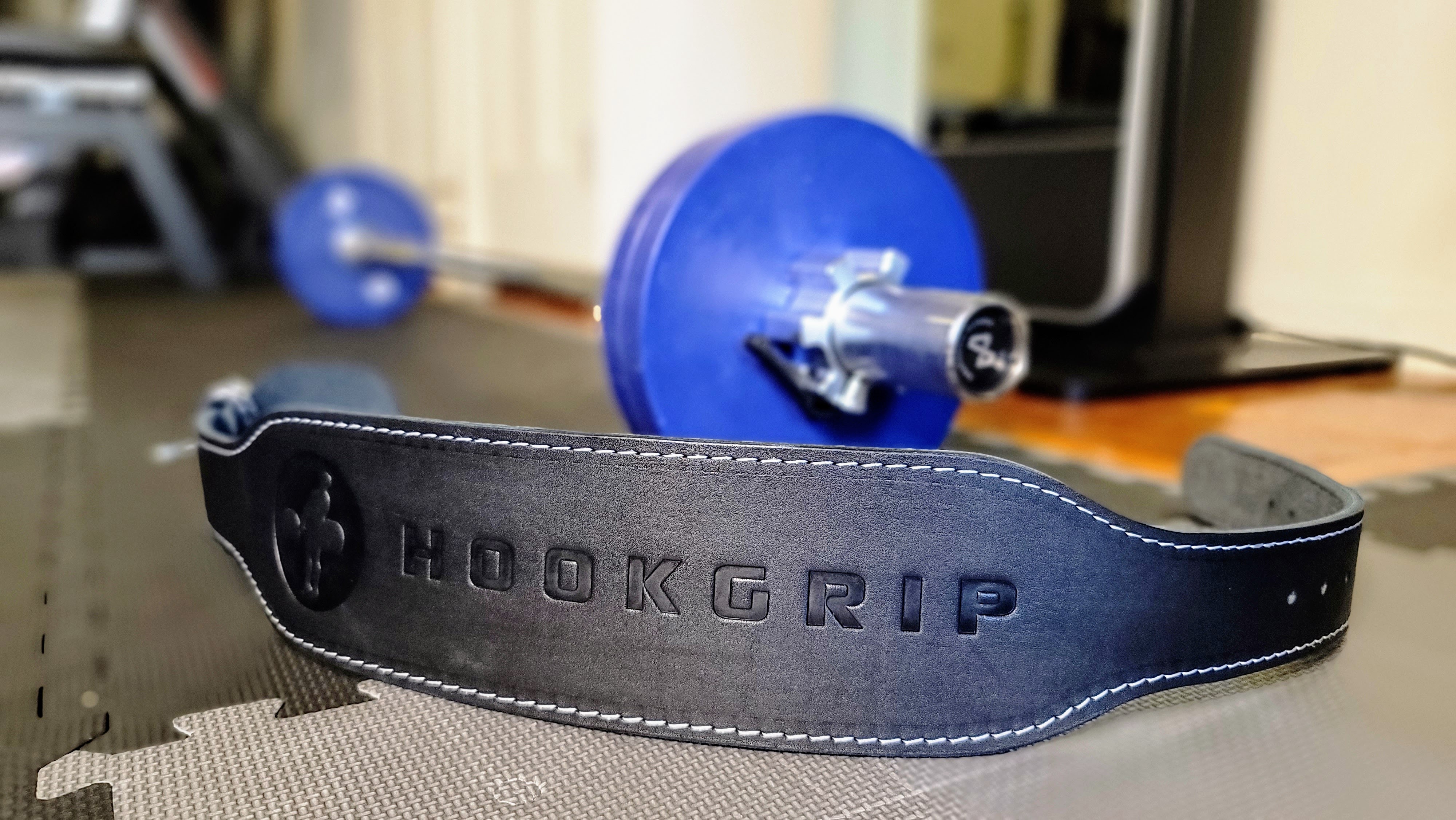
When it comes to your go-to weightlifting belt, you lot don't desire one that's besides potent, nor as well bulky. The single-prong Hookgrip Russian Weightlifting Belt sits squarely within the Goldilocks Zone in terms of comfort and stability — for both male and female anatomy.
Each belt has nine holes punched roughly one inch autonomously, providing 10 inches overall of adjustability (available in an impressive diverseness of customizable sizes, from S to 3XL). Hookgrip belts are constructed from high quality leather that's as flexible as information technology is stiff.
While the first 2 belts on this list have a compatible width all the manner around, Hookgrip's bodybuilding-style belt features a contoured shaped that's thick in the dorsum (3.eight inches) and thinner in the front (2 inches), which is practically minor enough to fit through the belts loops of my former JNCO jeans. The unmarried stitching looks super precipitous, as does the Hookgrip logo stamped in the dorsum, which gives it a more than premium flair than competing belts.
Speaking of which, at $lxx the Hookgrip Russian Weightlifting chugalug is far less expensive than it looks. It felt instantly comfortable every bit I transitioned from squats to overhead presses to deadlifts, with just the right amount of support around my waist. Granted, since my NYC flat isn't an Olympic gym, I wasn't putting upward crazy amounts of weight — just enough to actuate my core and put these belts to work. (See below for my full testing methodology.)
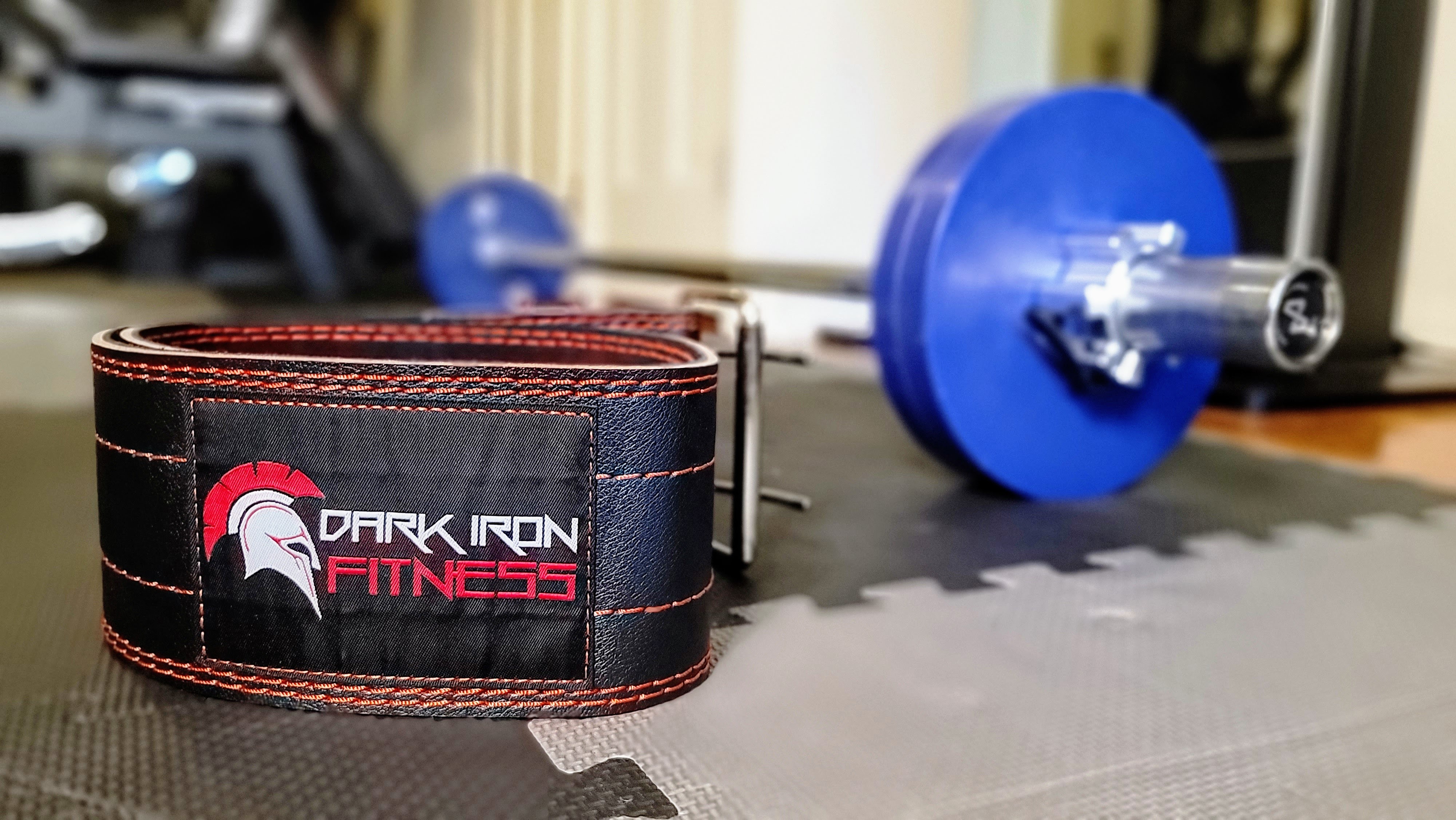
Designed to exist flexible yet uber-stiff, the Dark Iron Fitness Weightlifting Belt is ideal for all kinds of strength training. USAPL certified for both male and female athletes, these belts are constructed from premium buffalo hide leather that won't interruption, tear under force per unit area, or wearable out leading up to the large contest. That checks off all the right boxes then far.
Going for the gold? Nighttime Iron Fettle belts have a 600-pound weight limit and generous 4-inch width; four millimeters of thickness keeps your cadre tight while providing just the right level of comfort and support. The company claims their belts could potentially add 10 per centum of ability to your lifts, eliminating potential dorsum hurting in the process. (As long every bit you put in the work, that is.)
The Dark Iron Fitness Weightlifting Belt might be the aforementioned width equally the Ohio Rogue, but at just 4mm thick, it's got roughly half the bulk, and from my perspective, half the stiffness right out of the gate. I like the double stitching, too, and the double-pronged buckle stayed overnice and snug throughout each do. It never felt like the belt was going to slip whatever, though the leather's edges dug into my skin a chip during squats. Leather takes a while to go fully pliable, but by the time I'd finished my third set of squats, the reinforced construction already felt broken in.
And let's not forget about the toll. Premium belts can price upwards of $100, but at just $36, the Dark Iron Fettle Weightlifting Belt represents a solid value, to boot.
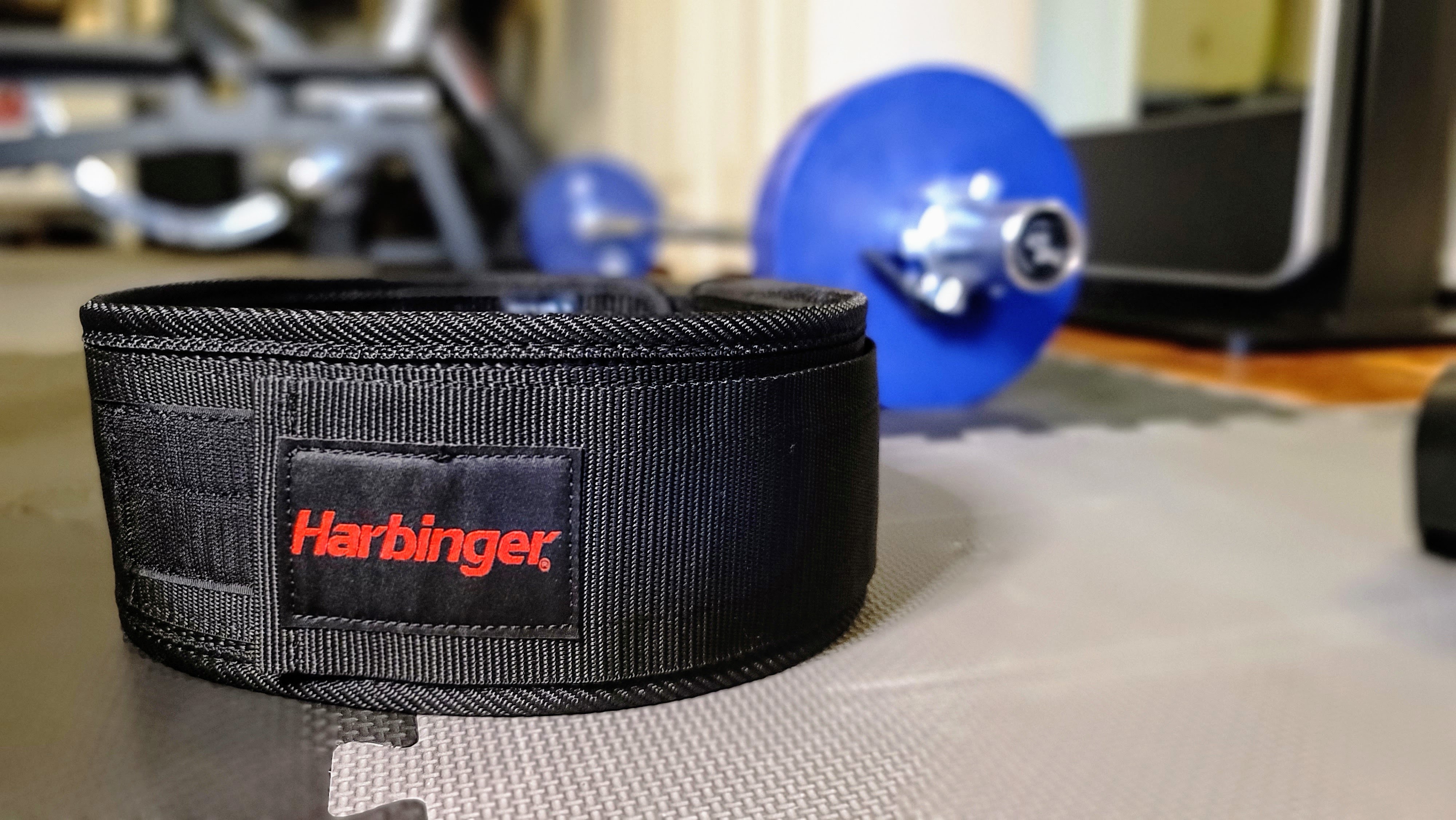
While many of the all-time weightlifting belts feature leather-and-steel construction, you lot'll oftentimes pay upwards of $100 for such premium materials. Gym safety doesn't accept to cost an arm and a leg, though, and the Harbinger four-inch Nylon Weightlifting belt is perfect for not-professional athletes who are but looking for more back up and stabilization in their gym routine. (Without getting any cows involved.)
You won't observe many powerlifters or Olympic competitors wearing nylon belts, but for semi-slackers like myself, at that place's a lot to like about going constructed. For one, leather isn't on everyone's brusk list, and you'll get enough of core support from manmade materials. In Harbinger's case, a durable 346-count nylon web flexes around your waist for maximum comfort, and the heavy guess steel buckle is easy to adjust for a custom fit. In short, Harbinger keeps things pretty simple, and for less than $thirty, this weightlifting belt should get the task washed for about gym-goers.
The uniform iv-inch width is adjustable via the 3-inch support strap, which seals the bargain with Velcro and a roller buckle, every bit opposed to a traditional pronged design. The former is more customizable, and the nylon was marginally more flexible than the leather competitors I tested.
While I appreciated the Hookgrip chugalug for its general condolement and support, Harbinger's nylon construction definitely allowed for more motility during my testing, especially since it's easier to adjust the latter belt on the fly. For the casual athlete, this weightlifting belt might be all you need. Particularly at this cost.

Whereas the weightlifting belts above are all about back support, the DMoose Dip Belt was designed to help you push through even the most beastly of (upper) bodybuilding barriers. If you're not familiar with dip belts, hither'due south how they work: you wrap the strap loosely effectually your body, adhere a nearby dumbbell or weight plate to the built-in concatenation — assuasive it to dangle squarely between your legs — and voila! You've simply added a bunch of dynamic resistance to your previously-boring pull-ups, mentum-ups, dips, and sumo squats. You're welcome in advance.
Constructed from sweat-resistant neoprene that'due south held together with secure saddle stitching, the DMoose Dip Belt is six inches wide in the center, which adds plenty of extra padding for your lower lumbar as you lot heighten and lower your body. Dip belts are an understated workout tool for any dwelling gym, though they require a power tower of some kind for near exercises; they're great for increasing stamina, endurance, and overall gains. (Heck, when utilized correctly, the DMoose Dip Chugalug can fifty-fifty be used to improve your posture.
To go a experience for the DMoose Dip Belt, I used it to perform several sets of weighted dips on my home gym power tower, increasing the weight incrementally as I went. The thick neoprene padding felt comfortable against my lumbar as I powered through each set up, with the actress weight dangling securely between my legs. I well-nigh forgot how much harder dip belts make you work past adding but a few extra pounds to your frame; they sure change the game for whatever bodyweight exercises you're usually into. The carabiners on each stop of the chain await a little flimsy, just that'due south an easy upgrade if you desire to supercede them.
How we tested the best weightlifting belts
Full disclosure: I'm not a powerlifter or bodybuilder, nor do I aspire to be i. That being said, I've been pumping atomic number 26 on-and-off since the age of xvi, and I'g plenty familiar with all the Olympic-way exercises that may (or may not) require a weightlifting belt. Dorsum in my collegiate heyday when I was bench-pressing 275+ pounds and shrugging 500+ pounds for absolutely no reason at all, I'd employ a weightlifting belt every bit needed, depending on the practise. (Read: I didn't know what the heck I was doing.) But over the years I've exchanged brute forcefulness for holistic health in terms of overall muscle symmetry.
I reviewed the Tempo Studio last yr, so I happened to have a 25-pound barbell handy. To put these weightlifting belts through their paces, I created a control workout consisting of three different barbell exercises — squats, overhead press, and deadlifts. I used merely enough weight to wake upwards my muscles and actuate my core, forcing each belt to support my lower dorsum (to some degree) as I progressed. Heed yous, it takes a while to interruption in a make-new leather belt, but a proficient one should be comfy most immediately. Later on a 10-minute jog to get the blood pumping, I was set to rock.
Squats (Parallel)
- Set #1: 65 pounds (15 reps)
- Set up #two: 85 pounds (10 reps)
- Gear up #3: 105 pounds (five reps)
Overhead Press
- Set #1: 55 pounds (15 reps)
- Set #2: 65 pounds (10 reps)
- Set #3: 85 pounds (v reps)
Deadlifts
- Gear up #1: 85 pounds (15 reps)
- Set #ii: 105 pounds (x reps)
- Set up #3: 105 pounds (10 reps)
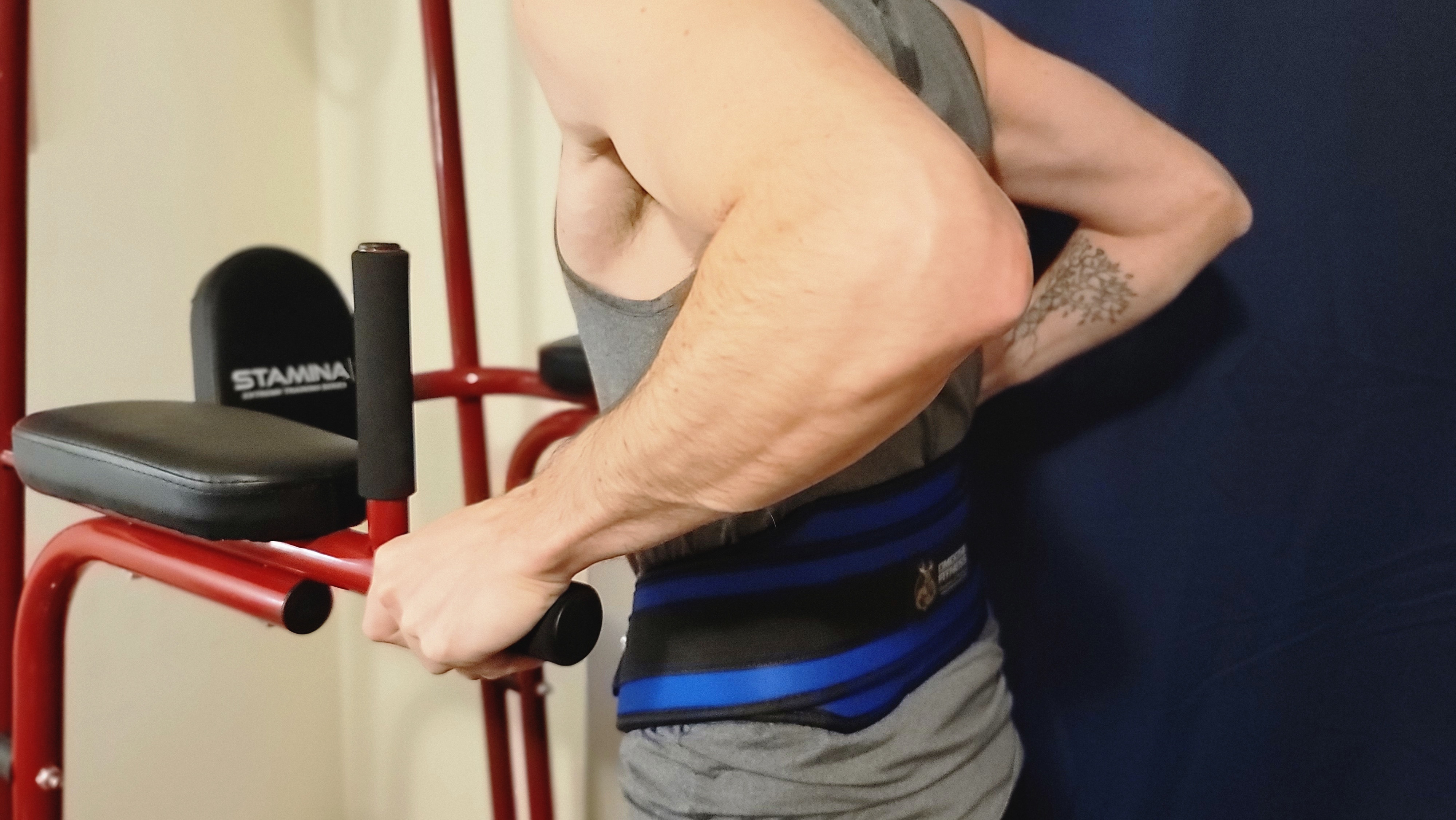
To test dip belts, I performed three sets of weighted dips on my power tower.
Weighted dips
- Set #1: v pounds (15 reps)
- Set #2: 10 pounds (10 reps)
- Prepare #3: xv pounds (5 reps)
As I tested each weightlifting chugalug, I was looking for comfortable/durable structure, high-quality stitching, strong buckles, and excellent core back up. Oh, and a decent price.
How to cull the best weightlifting belt for you
Equally mentioned above, weightlifting belts tin be an semi-extraneous gym accessory for the average gym member, depending on your fitness hustle. There are a variety of things to consider before buying a belt:
Exercise you actually need a weightlifting belt?
If y'all're an aspiring powerlifter or bodybuilder of whatsoever kind, the answer is a resounding "yep." As yous accomplish heavier and heavier lifts, yous'll absolutely need a weightlifting belt to provide actress core support as you lot blindside out those concluding soul-sucking reps. For more casual athletes, however, this is a highly subjective question based on your personal physiology and specific fitness discipline/south. Long-story-long, the combination of intra-abdominal force per unit area and increased back support can boost your overall core stability, leading to heavier lifts. If that's what you're going for.
Wearing a weightlifting belt all the time is hardly a good for you exercise, though, since it prevents you from performing certain movements that fully engage the core. (Accept yous ever seen someone wear a belt during their entire two-hr conditioning? That's non exactly platonic.) Information technology's a topic that's up for debate, to some degree, but if you don't perform Olympic-style lifts on the regular, yous probably don't need a chugalug, unless yous want/need the extra back support from fourth dimension to time.
What kind of belt should you consider?
Weightlifting belts generally autumn into three major categories. Powerlifting belts have a uniform width all the way around (typically measuring 10 millimeters thick and four inches wide), and are favored past powerlifters and strongmen. Bodybuilding belts are meant for Olympic lifters and recreational athletes; the tapered width narrows around the waist, with thicker posterior sections that follow the body's natural curvature. Velcro belts are made from synthetic materials that result in less intra-intestinal pressure when compared to bodybuilding and powerlifting belts.
If y'all can, have a trip to your local sporting goods store to test out which style of chugalug is near comfortable for y'all. Every body is different, and every fitness journey is unique.
What kind of fastening mechanisms are available?
Exist it buckle, lever, or Velcro, your locking mechanism of choice more often than not comes downwards to personal preference, though some fasteners have a quicker release than others. Just make sure everything clicks, slides, or locks deeply in place when you strap the belt on.
What belt fabric should you choose?
Powerlifting purists may adopt a traditional leather belt, merely there are plenty of nylon-based options that become the job done just every bit well. Leather is stronger and tends to hold up longer over fourth dimension (with proper upkeep), while nylon is far easier to interruption in right from the get-become.
What's your upkeep like?
While many premium weightlifting belts cost upwards of $100, you can pick up a decent one for less than $50. Just call up: you get what you pay for. You don't need a weight belt for the best beginner HIIT workouts .
Source: https://www.tomsguide.com/best-picks/best-weightlifting-belts
Posted by: buckleydowanceares.blogspot.com


0 Response to "The best weightlifting belts in 2022"
Post a Comment